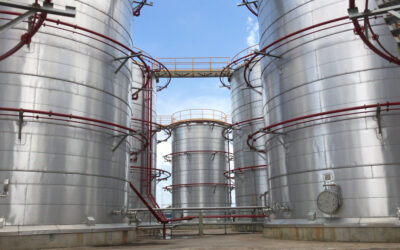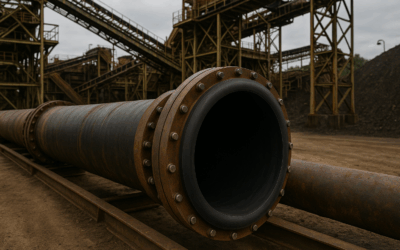The chemical industry faces unique challenges when it comes to storing and transporting acidic, corrosive materials. Equipment like acid tanks requires a durable, resilient lining that can protect against the harsh effects of aggressive chemicals, and rubber has become a forefront solution.
Why Rubber Lining for Acid Tanks?
Key Features and Benefits:
The chemical industry depends on storage and transport systems that withstand highly corrosive conditions. Acid tanks, specifically, are exposed to harsh chemicals that can quickly erode unprotected metal surfaces, leading to expensive repairs and significant downtime.
Rubber lining provides a robust, flexible solution that prevents acid tank damage caused by corrosive chemicals. It acts as a buffer between the tank’s metal surface and the chemicals within, shielding the equipment from corrosion and maintaining structural integrity.
By choosing rubber linings, companies in the chemical industry can save on repair and replacement costs, reduce the risk of leaks or spills, and enhance operational safety.
Learn more about why rubber is the best tank lining material >>
The 5 Best Rubber Lining Materials for Chemical Applications
Not all rubber linings are created equal. Different compounds offer varying levels of protection, depending on the chemical nature of the stored substances. The following are some of the most effective rubber materials used in the chemical industry for acid tank linings:
1. Natural Rubber
Natural rubber is one of the most common choices for rubber linings. It provides excellent abrasion resistance and flexibility. However, it can have limitations with certain aggressive chemicals and is therefore most suitable for mild acid storage tanks where the chemical exposure is less aggressive.
2. Neoprene Rubber
Neoprene is an ideal choice for tanks exposed to moderate acids and alkalis. It is highly resistant to oils, greases, and a wide range of chemicals, making it suitable for multi-purpose use in chemical processing environments. Neoprene also offers good weather resistance, which is beneficial for tanks stored outdoors.
3. Butyl Rubber
Butyl rubber is a high-performance material known for its resistance to concentrated acids like sulfuric and hydrochloric acids. Its low permeability and high resistance to aging and weathering make it a popular option for acid tanks that require enhanced durability and protection.
4. EPDM (Ethylene Propylene Diene Monomer)
EPDM rubber is recognized for its ability to resist heat, UV, and weather exposure, as well as its chemical resistance to mild acids and alkalis. It is particularly useful for tanks and vessels exposed to outdoor environments or subjected to extreme temperature changes.
5. Chlorobutyl and Bromobutyl Rubbers
Chlorobutyl and bromobutyl rubbers are chemically resistant materials with strong barriers against acids and gases. These rubbers provide excellent impermeability, making them suitable for tanks that contain highly volatile or reactive substances.
Selecting Your Acid Tank Rubber Lining: What to Consider
While choosing the right rubber lining for your acid tanks, consider the following factors:
1. Chemical Compatibility
As mentioned above, the type of chemical stored in the tank dictates which rubber lining material is most appropriate. For example, tanks containing highly concentrated acids may require butyl or chlorobutyl linings, while less reactive chemicals might be adequately contained with neoprene or natural rubber linings.
2. Temperature Resistance
High temperatures can degrade certain types of rubber linings over time. It’s essential to select a rubber lining that can endure the temperature conditions of the storage environment. EPDM, for instance, is suitable for applications that require temperature resilience.
3. Abrasion and Physical Wear
In some cases, chemical tanks experience frequent mixing or stirring, which can wear down the lining. A rubber lining with high abrasion resistance, like natural rubber, may be beneficial in these instances.
4. Tank Size and Shape
Larger tanks or those with complex shapes may benefit from a highly flexible, moldable rubber lining material that ensures comprehensive coverage and uniform protection.
5. Lining Thickness
The thickness of the rubber lining plays a critical role in its durability and resistance to wear over time. Thicker linings offer enhanced protection against mechanical abrasion and chemical penetration, making them suitable for tanks exposed to highly aggressive acids or subjected to frequent agitation.
However, thicker linings may also add to installation time and material costs, so it’s essential to balance thickness with operational demands. For chemical tanks that encounter less intense wear, a thinner lining may suffice, offering flexibility and cost savings without compromising safety.
Your Partner for Chemical-resistant Acid Tank Linings
By choosing the right rubber lining material, you can enhance the durability of your acid tanks, reduce maintenance costs, and ensure safe, reliable storage of hazardous chemicals. If you’re looking for guidance or are ready to get started on a project, get in touch. We can guide you to the best solution that’s tailored to your application’s unique needs and delivers long-lasting protection.







